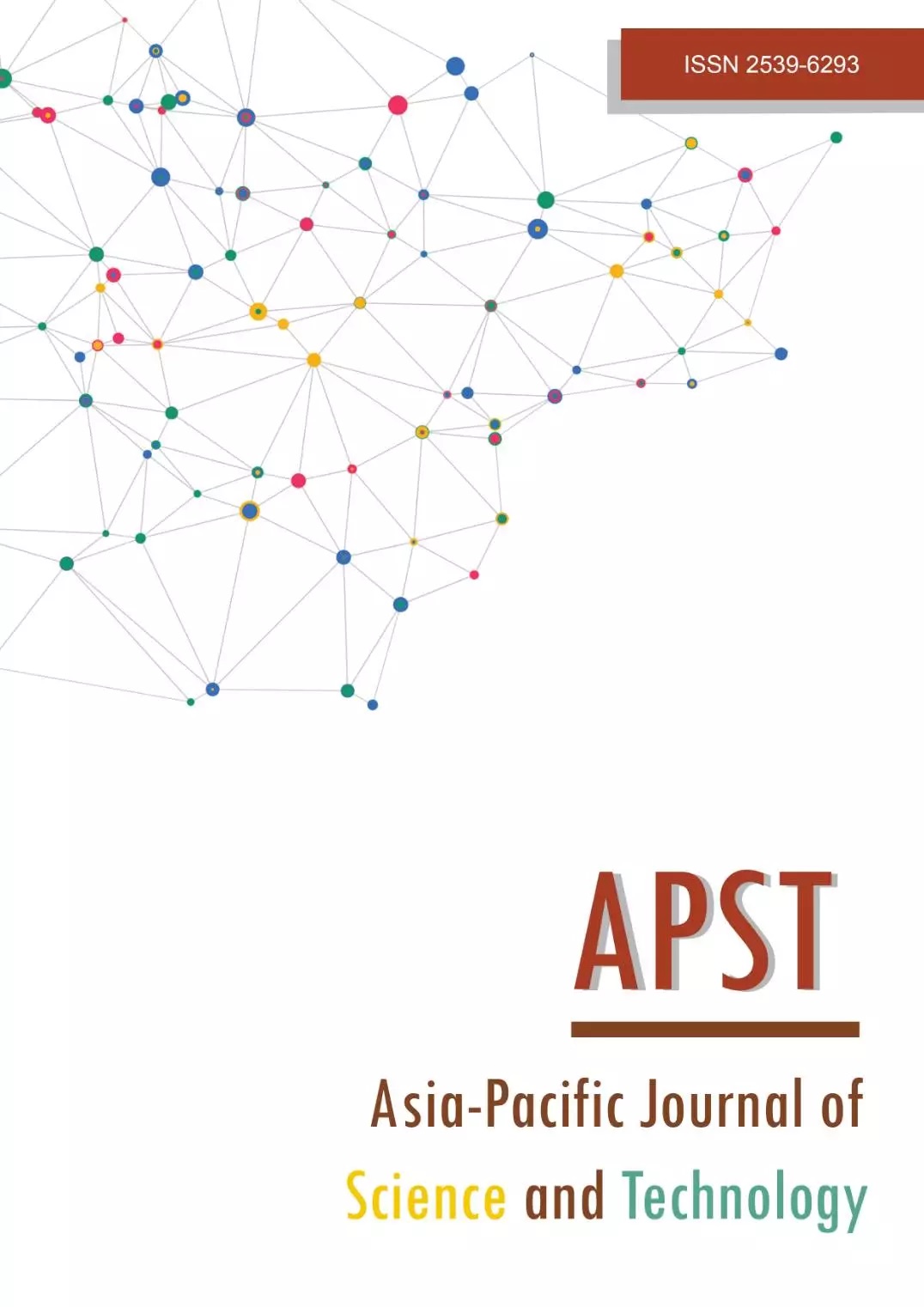Morphological characteristics of derived mutants of Pinilisa rice cultivar
Main Article Content
Abstract
The investigation was conducted at the Department of Crop Science Production and Research area of the Central Luzon State University-College of Agriculture, Science City of Muñoz, Nueva Ecija, Philippines from January to May 2017. The experiment used Augmented Design with 5 blocks and 50 mutant lines with 3 checked varieties. M3 generation of 50 mutant lines of rice derived from the traditional variety of Pinilisa was evaluated for morphologically characterized mutant lines of Pinilisa. The traits observed similar to the wild type were intermediate blade pubescence, light green blade color, green basal leaf sheath color, erect blade angle, whitish ligule color, for 2-cleft ligule shape, and green culm color. While the traits observed differently among mutant lines were awnless and light green awn color, erect and semi-erect flag leaf angle, partly exserted panicle, just exserted, moderately well-exserted and well-exserted panicle, and awnless and whole length awning were based on 19 morphological traits. Cluster analysis using morphological traits revealed a relationship by forming one big cluster among the mutant lines. The wild type was attacked by stem borers which led to dead hearts; no data for growth and yield parameters were recorded. M3 generation of mutant lines recorded top three mutant lines in terms of days to 50% flowering and days to maturity, Crop Science Mutant Plant (CSMP) 204a, CSMP 204b and CSMP 203b, 3 short stature, CSMP 204a, CSMP 174 and CSMP 203b, 1 percent filled spikelet/panicle and number of filled spikelet/panicle, CSMP 92a, 6 good tillering ability, CSMP 17, CSMP 121, CSMP 91, CSMP 39, CSMP 203b and CSMP 6, 1 fine heavy grain weight, CSMP 202, 1 high yielding ability, CSMP 81, 1 longest grain length, CSMP 139 and 1 longest grain width, CSMP 114. The highest computed yield of 2.70 t/ha was from CSMP 81 while CSMP 204a, CSMP 204b and CSMP 114 were the early maturing (112 DAS) mutant lines.
Article Details

This work is licensed under a Creative Commons Attribution-NonCommercial-NoDerivatives 4.0 International License.
References
Pandet R, Bhusal B, Regmi R, Neupane P, Bhattarai K, Maharjan B, et al. Mutation breeding for crop improvement: a review. RFNA. 2021;2(1):31-35.
Khursheed S, Raina A, Khan S. Improvement of yield and mineral content in two cultivars of Vicia faba L. through physical and chemical mutagenesis and their character association analysis. Arch Curr Res Int. 2016;4(1):1-7.
Raina A, Laskar, RA, Jahan R, Amin R, Khursheed S, Wani MR, et al [Internet]. 2018 [cited 2022 Feb 10]. Available from https://www.researchgate.net/publication/329389081.
Shu QY, Forster BP, Nakagawa H. Principles and applications of plant breeding. 1st ed. Rome: Guttenberg Press Ltd; 2008.
Temanel B, Temanel F. Production performance of upland Rice cv. Pinilisa as influenced by organic, foliar and inorganic fertilizers. PJCS. 2010;35 Suppl1:27.
Ndour D. Tests of Agro-morphological characterization and genetics of salt tolerance in rice (Oryza sativa L.) in the Senegal River Delta. Memory Master II, University Cheikh Anta Diop in Dakar; 1998.
Tiwari S, Koutu GK, Parte D, Katkani D. Agro morphological characterization of restorer lines of rice. Pharma Innov J. 2021;SP-10(11):466-475.
De Guzman JT, Guittap EJM, Dela Cruz QD. Sensitivity of pigmented rice (Oryza sativa L.) to gamma radiation [thesis]. Nueva Ecija: Central Luzon State University; 2013.
Banao M. and Guittap E. Agro-morphological characterization and selection of second generation mutant lines in pigmented rice (Oryza sativa L.) [thesis]. Nueva Ecija: Central Luzon State University; 2015.
Tapic RT, Cruz DQD, Alfonso AA, Canare JG, Labe MS, Tamayo NV. Morphological, molecular, cytogenetic and field performance evaluation of mutant lines of rice (Oryza sativa L.) cv. NSIC Rc144 [dissertation]. Nueva Ecija: Central Luzon State University; 2011.
Thimmanna D, Jagadish GV, Venkataramana F. Diagnostic morphological characteristics of the parents of Karnataka rice hybrids. MJAS. 2000;13(3):729-732.
Mehla BS, Kumar S. Use of morphological traits as descriptors for identification of rice genotype. Agric Sci Digest. 2008;28(2):104.
Lee S, Constanzo S, Jia Y. The structure and regulation of genes and consequences of genetic mutations. In: Shu QY, Forster BP, Nakagawa H, editors. Plant mutation breeding and biotechnology. 1st ed. Vienna: International Atomic Energy Agency; 2011. p. 31-45.
Rao GJN, Patnaik A, Chaudhary D. Genetic improvement of basmati rice through mutation breeding. In: Shu QY, Forster BP, Nakagawa H, editors. Plant mutation breeding and biotechnology. 1st ed. Vienna: International Atomic Energy Agency; 2011. p. 445-452.
Karp A, Edwards KJ. Molecular techniques in the analysis of the extent and distribution of genetic diversity. In: Ayad WG, Hodgkin T, Jaradat A, Rao VR, editors. Molecular genetic techniques for plant genetic resources: Report of an IPGRI Workshop; 1995 Oct 9-11; Rome, Italy. IPGRI: Italy; 1995. p. 11-22.
International Rice Research Institute. Standard evaluation system (SES) for rice. 5th ed. Manila: IRRI; 2013.
Hartina BS, Wulandari RA, Basunanda P. Morphological characterization of six Lombok upland rice cultivars. PISPI. 2021;6(2):88-98.
Spencer-Lopes MM, Forster BP, Jankuloski L, editors. Manual on mutation breeding. 3rd ed. Rome; FAO; 2018.
Mani D. Characterization and genetic analysis of a very high tillering and dwarf rice (Oryza sativa l.) Mutant [thesis]. Texas:Texas A&M University; 2008.
Abadassi J. Rice agronomic traits needed in tropical zone. JCBPS. 2016;6(3):828-834.
Matsushima S, Tanaka T. Analysis of developmental factors determining yields and its application to yield prediction and cultural improvement of lowland rice: LV early discrimination of non-fertilized rice-grains. Jpn J Crop Sci. 1960;28(4):365-366.
Chomicki G, Coiro M, Renner SS. Evolution and ecology of plant architecture integrating insights from the fossil record, extant morphology, developmental genetics and phylogenies. Ann Bot. 2017; 120(6):855-891.
Yoshida S. Fundamentals of rice crop science. 1st ed. Manila: IRRI; 1981.
Takeda K. Rice Genetics II [Internet]. Manila: IRRI; 1991 [cited 2016 Sep 1]. Available from: http://books.irri.org/9712200272_content.pdf.
Adair CR, Bollich CN, Bowman DH, Joson NE, Johnston TH, Webb BD, et al. Rice breeding and testing methods in the United States. In: Adair CR, editor. Rice in the United States: varieties and production. 2nd ed. Washington: U.S. Government Printing Office; 1973. p. 22-25.


